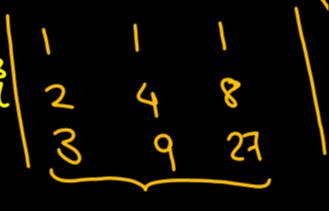Question
Question: The table shows numbers of the form $n^j$ for $n \in \{1, 2, 3\}$ and $j \in \{1, 2, 3\}$. What is t...
The table shows numbers of the form nj for n∈{1,2,3} and j∈{1,2,3}. What is the set-builder form for the set of all unique numbers in the table?

A
{ x | x=nj, n∈N, 1≤n≤3, j∈N, 1≤j≤3 }
B
{ x | x=nj, n∈{1,2,3}, j∈{1,2,3} }
C
{ x | x=nj, n∈Z, 1≤n≤3, j∈Z, 1≤j≤3 }
D
{ x | x=nj, n∈{1,2,3}, j∈{1,2,3}, x∈{1,2,3,4,8,9,27} }
Answer
{ x | x=nj, n∈N, 1≤n≤3, j∈N, 1≤j≤3 }
Explanation
Solution
The table contains elements generated by raising a row index n to the power of a column index j. The row indices are n=1,2,3, which are natural numbers. The column indices are j=1,2,3, which are also natural numbers. Therefore, the set of all unique numbers can be represented in set-builder form as {x∣x=nj,n∈N,1≤n≤3,j∈N,1≤j≤3}.
